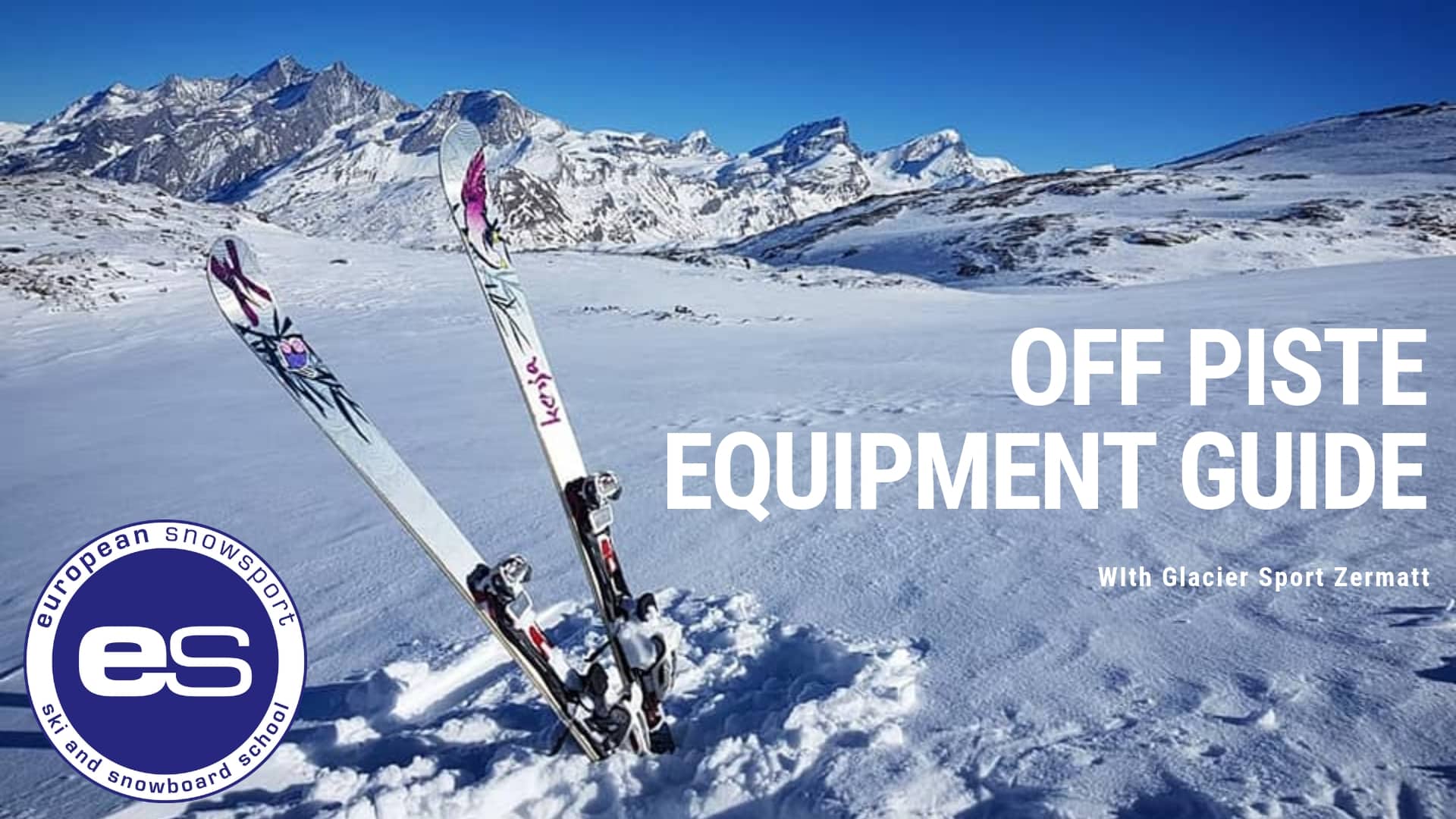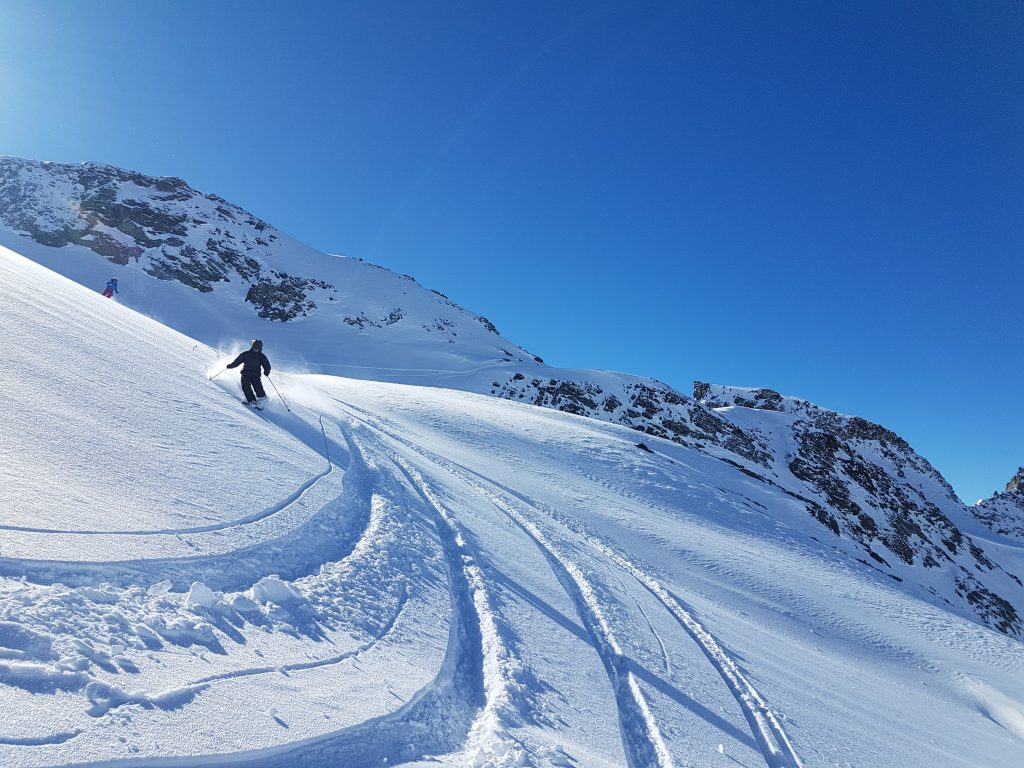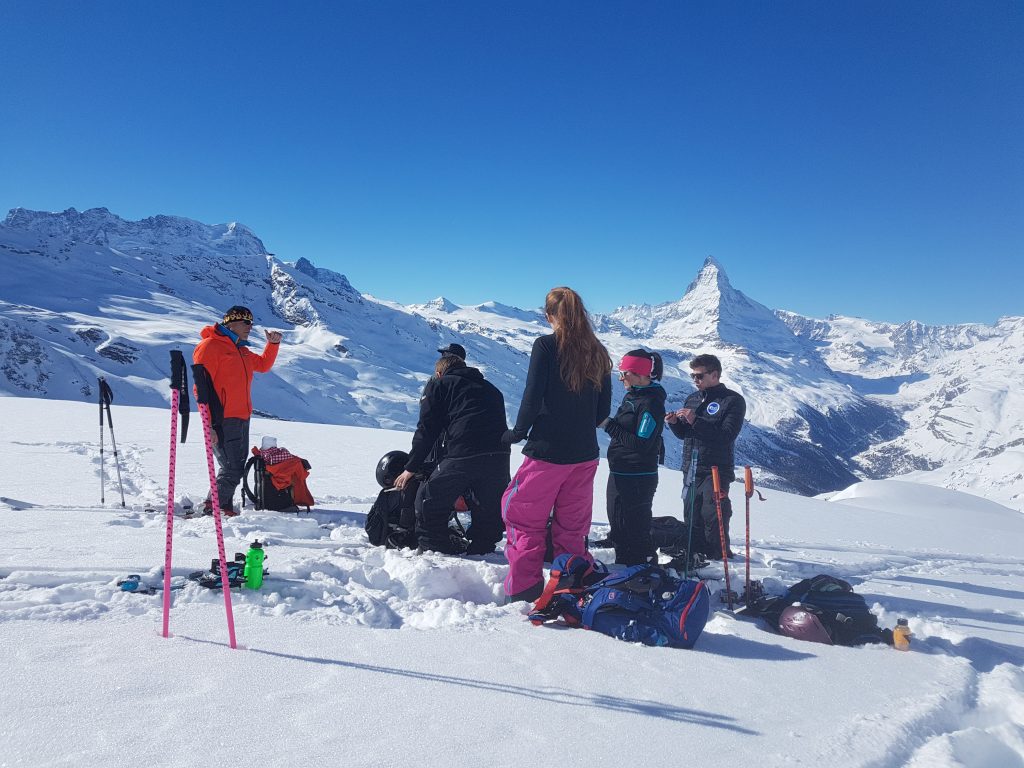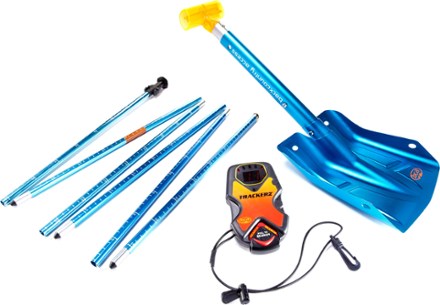
Many skiers looking to take themselves to the next level turn their ski tips towards the off piste. What can initially seem quite daunting, easily becomes an obsession driving riders to go again and again, pushing for bigger and better lines. But how does one make those first few tentative turns? What equipment can guide us through these new variable conditions? And what dangers should we be aware of when leaving the piste?

Well, before we do anything, there’s a gear checklist and not a whole lot of negotiation on it.
Anyone heading off piste needs to be carrying the Holy Trinity: Transceiver, Probe and Shovel. These three things together are the base line when it comes to straying from the pistes. In the event of an avalanche they can enable you to search and dig out your friends or save your life if it’s the other way around. Just carrying them isn’t enough either, knowing how to conduct a search properly can save you precious seconds.
Transceivers on the most part, are fairly straightforward to use. That’s not to say you shouldn’t practice with them. They have two settings, transmit and search. When transmitting they give off signals in concentric arcs meaning that sometimes they can be misleading to follow. You should always get out and practice with your transceiver and the stages of conducting a thorough search.
Probe. Also very lightweight and compactable, probes fold down to little more than a forearms length. When extended however they will allow you to push deep into the snow and feel for suspected burials once you have carried out your transceiver search.
Shovel. A shovel’s a shovel right? Well yes, but the one you would carry for avalanche safety will likely be compact, light and possible to separate the handle. You’ll be pleased of this when it saves you space in your backpack.

Powder Skis.
Skiing off piste snow conditions isn’t all about wearing the fattest powder skis you can find. In fact you can ski variable conditions on almost any ski with good technique. Having more ski underfoot does give you a better surface area to play with, which helps to create more float in deep snow. But realistically, unless you’re in the fabled powder fields of Japan, you’re not going to need anything drastically big. Very wide skis can also be less nimble and trickier to roll from edge to edge when the conditions firm up again. That’s where a decent all mountain ski comes in.
We asked our friends at Glacier Sport Zermatt to recommend some of their favourite skis in this category. Their answer? The Volkl Kenja for the ladies and Kendo for the guys.

Repeatedly voted top in ’All mountain’ ski categories, the Kenja and Kendo skis are well loved for their versatility. With 90mm under foot they are easy to manoeuvre in variable snow yet can be rolled from edge to edge with ease back on piste. They perform well at speed and feel stable. Both of these skis would be a great option for those looking at trying a more all mountain approach for the first time, or a more playful ski for someone who’s intermediate/advanced. Interested? Head into Glacier sport to find yourself a pair.
If you’d like to perfect your new found love of off piste skiing why not book a private lesson with one of our instructors? In Verbier we’ve just released the Big 5 Challenge for those who are already confident in variable conditions. Get in touch with us on our bookings page here.

